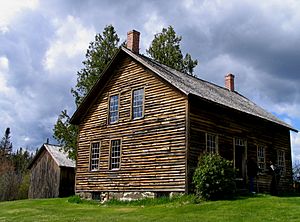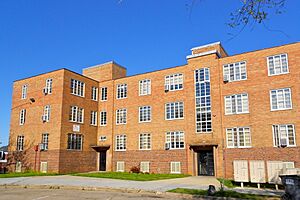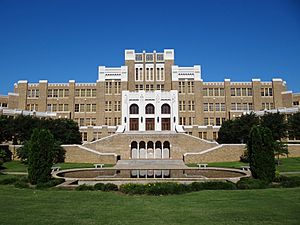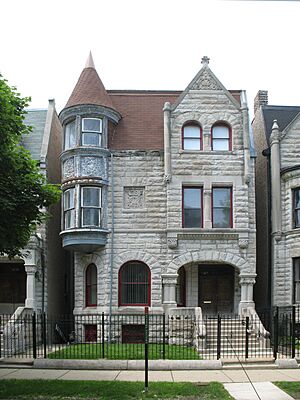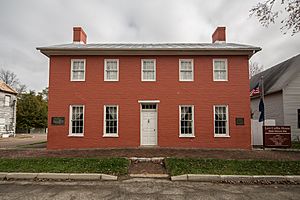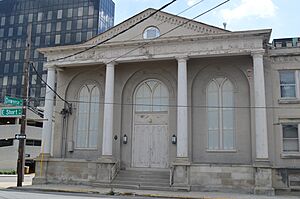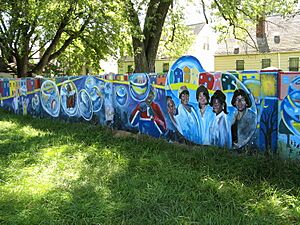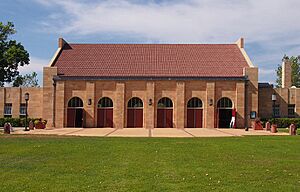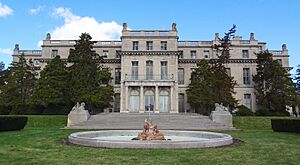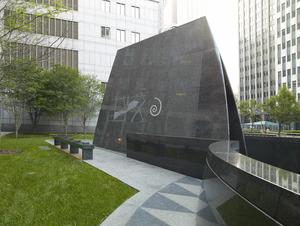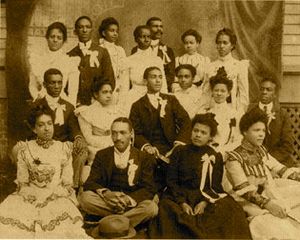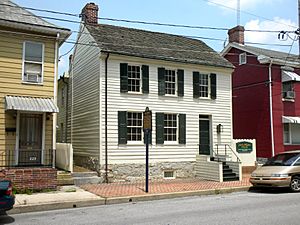List of African-American historic places facts for kids
These are important places in the United States that tell the story of African Americans. Some are local treasures, while others are recognized nationally. They show the amazing things African Americans have achieved, the tough times they faced, and their hopes for the future. People started working to save these places a long time ago, even back in 1917, when they tried to protect the home of Frederick Douglass, a famous leader who fought against slavery.
Visiting these places helps us understand the past and the people who lived through those times. They connect us to history and help us learn why things happened.
Contents
- African-American Historic Places by Time or Topic
- African-American Historic Places by State
- Alabama
- Arkansas
- California
- Connecticut
- District of Columbia
- Florida
- Georgia
- Illinois
- Indiana
- Iowa
- Kansas
- Kentucky
- Louisiana
- Maine
- Maryland
- Massachusetts
- Michigan
- Minnesota
- Mississippi
- Missouri
- Nebraska
- New Jersey
- New York
- North Carolina
- Ohio
- Oklahoma
- Pennsylvania
- Puerto Rico
- Rhode Island
- South Carolina
- Tennessee
- Texas
- Virginia
- Virgin Islands
- West Virginia
- See also
African-American Historic Places by Time or Topic
This list is based on other articles and books like The Negro Pilgrimage in America by C. Eric Lincoln and Before the Mayflower by Lerone Bennett Jr..
Early Beginnings
The story of African Americans starts in Africa. For a long time, people didn't know much about Africa's rich history. But studies since the 1960s have shown that Africa had many amazing civilizations with great art, buildings, and ideas. The journey of African Americans connects to these roots. You can see this history at places linked to the slave trade in America:
- Charlotte Amalie Historic District – Virgin Islands
- Kingsley Plantation – Florida
- Old Slave Mart – South Carolina
American Revolution Era
The American Revolution was a time of big changes, not just the war itself (1776–1783). Free Black people were part of the fight from the very beginning. In March 1770, Crispus Attucks was one of the first people to die in the Boston Massacre, a protest against British rule. At the Battle of Bunker Hill, brave Black soldiers like Peter Salem and Salem Poor fought with courage. Salem Poor was even praised for his actions that day.
- Burns United Methodist Church – Iowa
- Christiansted National Historic Site – Virgin Islands
- Hacienda Azucarera La Esperanza – Puerto Rico
- Jack Peterson Memorial, Croton-on-Hudson, New York
Slavery in America
For over 200 years, about four million Black people were forced into slavery in America. This system affected everyone in the country. It was based on the idea that one race was better than another. This idea shaped how African Americans developed and how all Americans treated each other.
The first Black people in the New World didn't arrive on a slave ship in Jamestown in 1619. In fact, a Black navigator named Pedro Alonzo Niño was with Christopher Columbus on his first voyage. From that time on, Black people were part of many Spanish explorations in the New World. For example, Neflo de Olaña and thirty other Black individuals were with Balboa when he discovered the Pacific Ocean.

- Antioch Missionary Baptist Church – Texas (connected to Richard Allen, who started the AME church)
- Jean Baptiste Point Du Sable Homesite – Illinois (home of Jean Baptiste Point du Sable, the first settler of Chicago)
- First African Baptist Church, Richmond, Virginia
- Lumpkin's Jail, Richmond, Virginia
- Prince Hall Masonic Temple – Washington, D.C. (connected to Prince Hall, who started the first Black Masonic Lodge)
Slave Rebellions
In 1791, Haiti saw the first successful slave revolt. But this wasn't the only one. Between 1663 and 1864, there were 109 revolts on land and 55 at sea. Important early rebellions include the 1712 uprising in New York City and Gabriel's Rebellion in Richmond, Virginia, in 1800. That same year, a free Black man named Denmark Vesey planned to take over Charleston, South Carolina, but his plan was discovered.
- Belmont – Virginia
- John Brown Farm – New York (birthplace of John Brown)
- John Brown Headquarters – Maryland (headquarters for John Brown's raid on Harpers Ferry)
- Stono River Slave Rebellion – South Carolina (site of the 1739 Stono Rebellion)
The Fight Against Slavery
When the U.S. gained a lot of land with the Louisiana Purchase in 1803, two different ways of life became very clear. In the South, slavery grew, creating a huge farming economy that relied on enslaved workers. In the North, industries were growing, and while not everyone supported ending slavery, the idea of a free society spreading west became strong.
By 1835, William Lloyd Garrison started The Liberator, a powerful newspaper that pushed for ending slavery. For the next 30 years, the North and South struggled to live together with their different economies and the growing movement to abolish slavery.
- Allen Chapel African Methodist Episcopal Church – Terre Haute, Indiana
- Levi Coffin House – Fountain City, Indiana (a key stop on the Underground Railroad)
- Frederick Douglass National Historic Site – Washington D.C.
- Eleutherian College – Lancaster, Indiana
- Harpers Ferry National Historical Park – West Virginia
- Harriet Beecher Stowe House – Brunswick, Maine (home of the author of Uncle Tom's Cabin)
- Liberty Farm – Worcester, Massachusetts
Civil War and Freedom
The American Civil War (1861-1865) was a fight between white Americans, but African Americans played a huge role. Early in the war, the U.S. Congress passed a law that freed any enslaved person who helped the Confederate war effort if they reached Union lines. Soon, General Sherman used these freed men to help build Union bases.
After the Emancipation Proclamation in 1862, the first all-Black military unit, the First Regiment Louisiana Heavy Artillery, was formed. The War Department then allowed more Black soldiers to join, forming famous regiments like the Massachusetts Fifty-Fourth and Fifty-Fifth Infantry Regiments. By the end of the war, there were over 150 all-Black regiments.
In September 1864, an all-Black division bravely attacked New Market Heights near Richmond, Virginia. They suffered many losses but helped the Union Army get closer to Richmond, which led to the end of the war the next April.
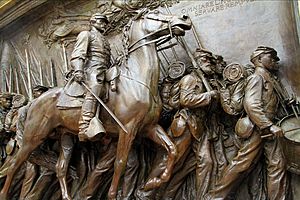
- Boston African American National Historic Site – Boston, Massachusetts
- Fort Pillow – Tennessee
- John Mercer Langston House – Oberlin, Ohio
- Port Hudson – Port Hudson, Louisiana
- Sulphur Trestle Fort Site – Elkmont, Alabama
Reconstruction Era
After the Civil War, during the Reconstruction era, African Americans began to build new lives and communities. Many schools and churches were founded.
- Alcorn State University Historic District – Lorman, Mississippi
- Bethel African Methodist Episcopal Church – Batesville, Arkansas
- Clarksville Historic District – Lancaster, Indiana
- Daufuskie Island Historic District – South Carolina
- Lincoln University Hilltop Campus Historic District – Jefferson City, Missouri
- Springfield Baptist Church – Greensboro, Georgia
- Stone Hall, Atlanta University – Atlanta, Georgia
- Charles Sumner High School – St. Louis, Missouri
Segregation and Jim Crow Laws
After Reconstruction, new laws called "Jim Crow" laws created a system of segregation. This meant Black and white people were kept separate in schools, hospitals, and public places. These laws also made it harder for Black people to vote.
- Black Theater of Ardmore – Ardmore, Oklahoma
- Davis Avenue Branch, Mobile Public Library – Mobile, Alabama
- Fourth Avenue Historic District – Birmingham, Alabama
- Indiana Avenue Historic District – Indianapolis, Indiana
- Sweet Auburn Historic District – Atlanta, Georgia
- Tenth Street Freedman's Town – Dallas, Texas
The Great Migration North
During the early 1900s, many African Americans moved from the Southern states to cities in the North and West. This was called the Great Migration. They were looking for better jobs and a chance to escape the harsh Jim Crow laws in the South.
- Chicago Bee Building – Chicago, Illinois
- Robert S. Abbott House – Chicago, Illinois
- Langston Terrace Dwellings – Washington, D.C.
- Wabash Avenue YMCA – Chicago, Illinois
Civil Rights Movement
The Civil Rights Movement was a time when African Americans and their allies fought for equal rights and to end segregation. Many important events happened at specific places that are now historic sites.
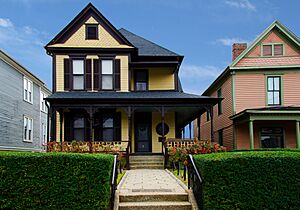
- 16th Street Baptist Church – Birmingham, Alabama (site of a tragic bombing)
- Brown Chapel African Methodist Episcopal Church – Selma, Alabama (a starting point for the Selma to Montgomery marches)
- Dexter Avenue Baptist Church – Montgomery, Alabama (where Martin Luther King Jr. was pastor)
- Martin Luther King Jr. Historic District – Atlanta, Georgia (includes King's birth home and church)
- Little Rock Central High School – Little Rock, Arkansas (where the "Little Rock Nine" bravely integrated the school)
- Malcolm X House Site – Omaha, Nebraska (birthplace of Malcolm X)
Cemeteries
Protecting African-American cemeteries is very important for understanding Black history. Many burial grounds for enslaved or freed Black people are now at risk. But new efforts are being made to save these historic places.
- African Burial Ground National Monument, New York, New York
- East End Cemetery, Richmond, Virginia
- Eden Cemetery, Collingdale, Pennsylvania
- Gospel Pilgrim Cemetery, Athens, Georgia
- Laurel Grove Cemetery – Savannah, Georgia
- Shockoe Bottom African Burial Ground – Richmond, Virginia
- Slate Hill Cemetery – Morrisville, Pennsylvania
African-American Historic Places by State
Many historic places across the United States tell the story of African Americans. Here are a few examples from different states:
Alabama
- 16th Street Baptist Church, Birmingham
- Brown Chapel A.M.E. Church, Selma
- Dexter Avenue Baptist Church, Montgomery
- Tuskegee Institute National Historic Site, Tuskegee
Arkansas
- Bethel African Methodist Episcopal Church, Batesville
- Little Rock High School, Little Rock
California
- Allensworth Historic District, Allensworth
- First African Methodist Episcopal Church of Los Angeles, Los Angeles
Connecticut
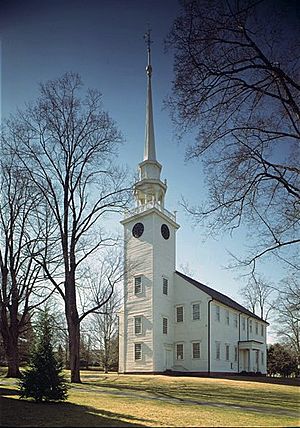
- First Church of Christ, Farmington
- Prudence Crandall House, Canterbury
District of Columbia
Washington D.C. has many important sites, including the Frederick Douglass National Historic Site.
Florida
Florida has places like Kingsley Plantation, which tells the story of slavery.
Georgia
- Martin Luther King Jr. Historic District, Atlanta
- Sweet Auburn Historic District, Atlanta
Illinois
- Dr. Daniel Hale Williams House, Chicago
- Ida B. Wells-Barnett House, Chicago
- Jean Baptiste Point Du Sable Homesite, Chicago
- Wabash Avenue YMCA, Chicago
Indiana
- Allen Chapel African Methodist Episcopal Church, Terre Haute
- Crispus Attucks High School, Indianapolis
- Levi Coffin House, Fountain City
Iowa
- Alexander Clark House, Muscatine
- Burns United Methodist Church, Des Moines
Kansas

- Nicodemus Historic District, Nicodemus
- Brown v. Board of Education National Historic Site, Topeka
Kentucky
- First African Baptist Church, Lexington
- Louisville Free Public Library, Western Colored Branch, Louisville
Louisiana
- Congo Square, New Orleans
- Evergreen Plantation, Wallace
- Port Hudson, Port Hudson
Maine
- Harriet Beecher Stowe House, Brunswick
- Abyssinian Meeting House, Portland
Maryland
- Frederick Douglass High School, Baltimore
- John Brown's Headquarters, Samples Manor
Massachusetts
- African Meeting House, Boston
- Boston African American National Historic Site, Boston
- William E.B. Du Bois Boyhood Homesite, Great Barrington
Michigan
- Idlewild Historic District, Idlewild
- Second Baptist Church of Detroit, Detroit
- Ossian H. Sweet House, Detroit
Minnesota
- Pilgrim Baptist Church, St. Paul
Mississippi
Mississippi has many sites related to the Civil Rights Movement and earlier history.
Missouri
- Lincoln University Hilltop Campus Historic District, Jefferson City
- Charles Sumner High School, St. Louis
Nebraska
- Malcolm X House Site, Omaha
New Jersey
New York
- African Burial Ground National Monument, Manhattan
- Apollo Theater, Manhattan
- Harriet Tubman Home for the Aged, Auburn
- John Brown Farm, Lake Placid
- Louis Armstrong House, Queens
North Carolina
North Carolina has many sites, including those related to the Greensboro sit-ins.
Ohio
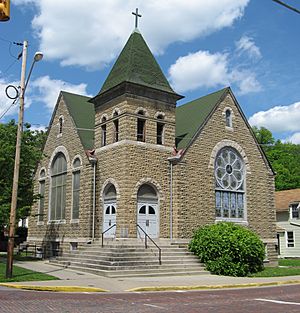
- Mount Zion Baptist Church, Athens
- Colonel Charles Young House, Wilberforce
- John Mercer Langston House, Oberlin
Oklahoma
- Black Theater of Ardmore, Ardmore
- Boley Historic District, Boley (a historic all-Black town)
- Ward Chapel AME Church, Muskogee
Pennsylvania
- Eden Cemetery, Collingdale
- Ercildoun Historic District
- John Brown House, Chambersburg
- Mother Bethel AME Church, Philadelphia
Puerto Rico
- Hacienda Azucarera La Esperanza, Manati (a sugar plantation with ties to slavery)
Rhode Island
- Hard Scrabble, Providence
South Carolina
South Carolina has many sites related to slavery and the Civil Rights Movement.
Tennessee
- Orange Mound, Memphis, Memphis (a historic Black neighborhood)
Texas
Texas has sites like Tenth Street Freedman's Town in Dallas.
Virginia
Virginia has many important sites, especially in Richmond, like Lumpkin's Jail and the Maggie L. Walker National Historic Site.
Virgin Islands
- Christiansted National Historic Site, Christiansted
- Estate Carolina Sugar Plantation, Coral Bay
West Virginia
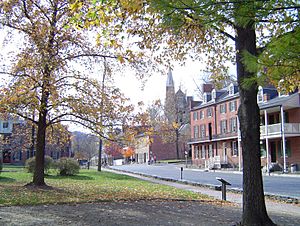
- Harpers Ferry National Historical Park, Harpers Ferry
- African Zion Baptist Church, Malden
|
See also



